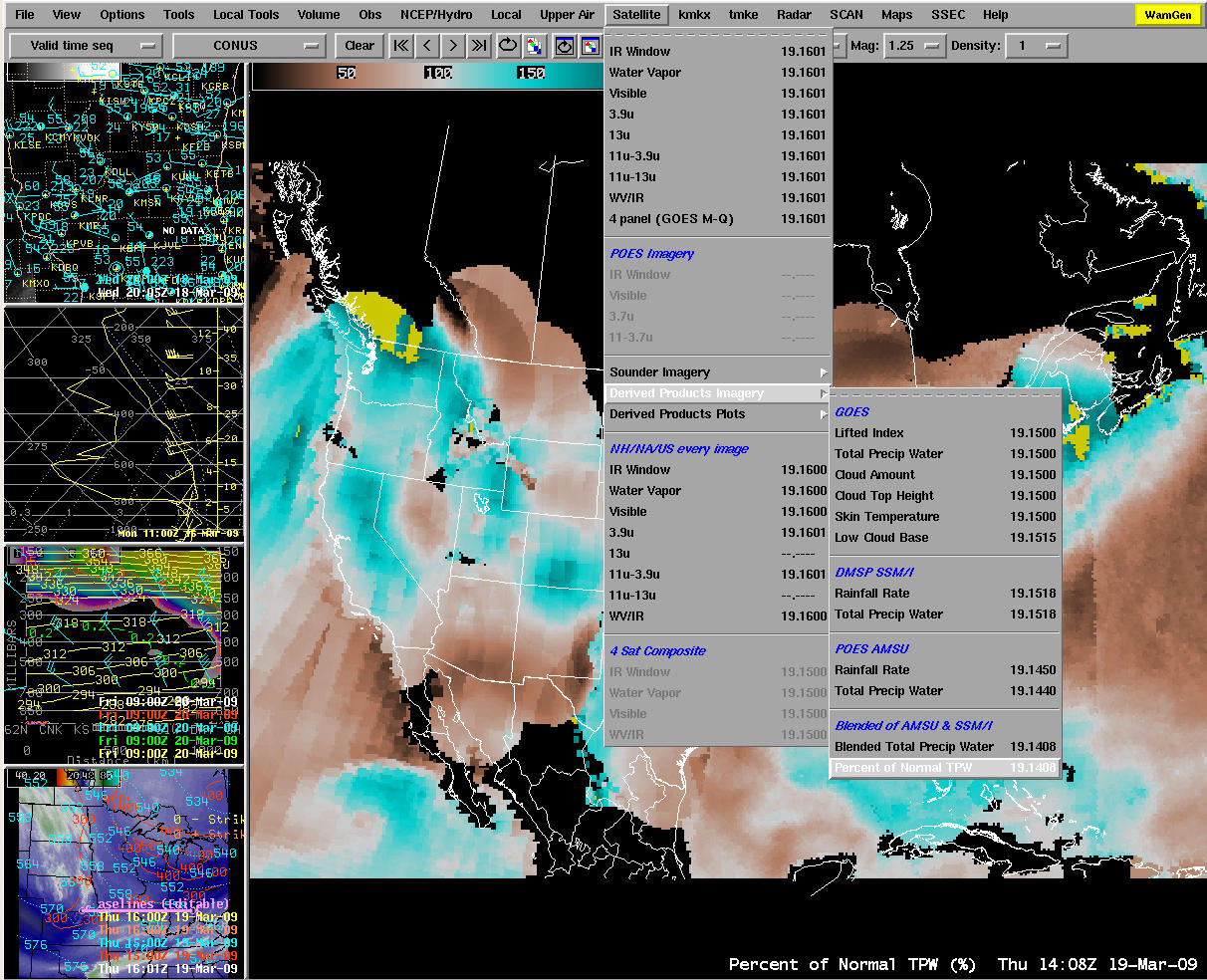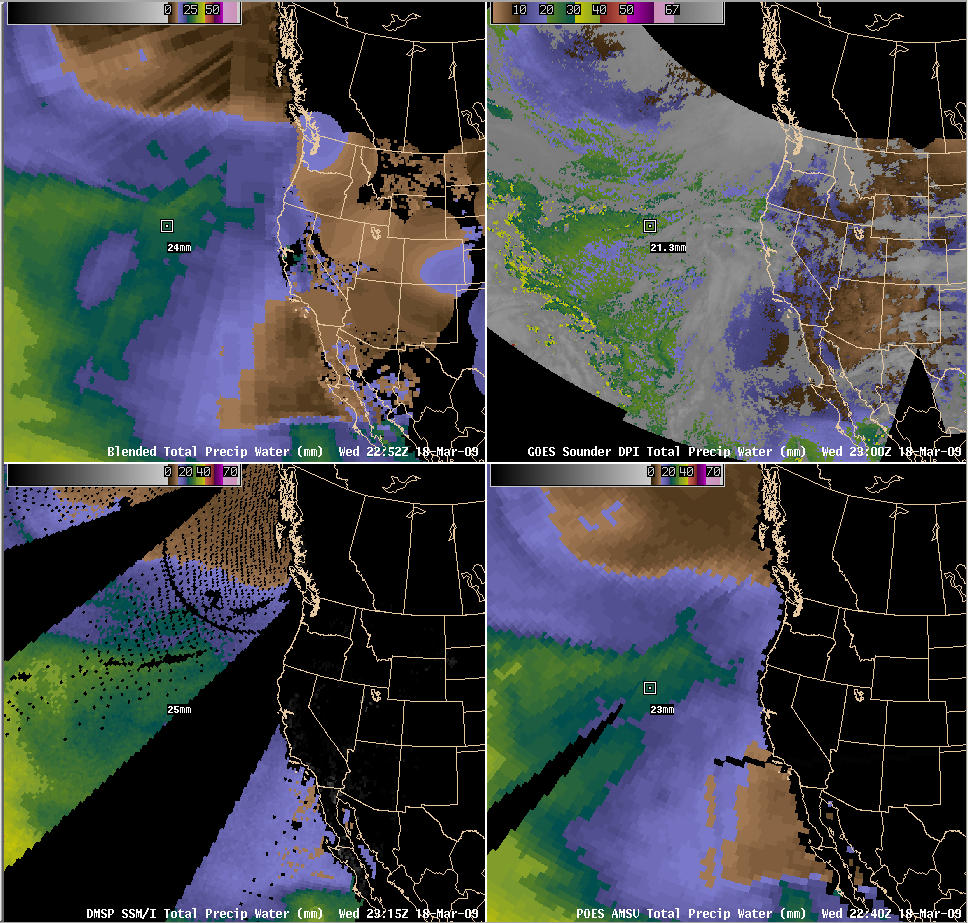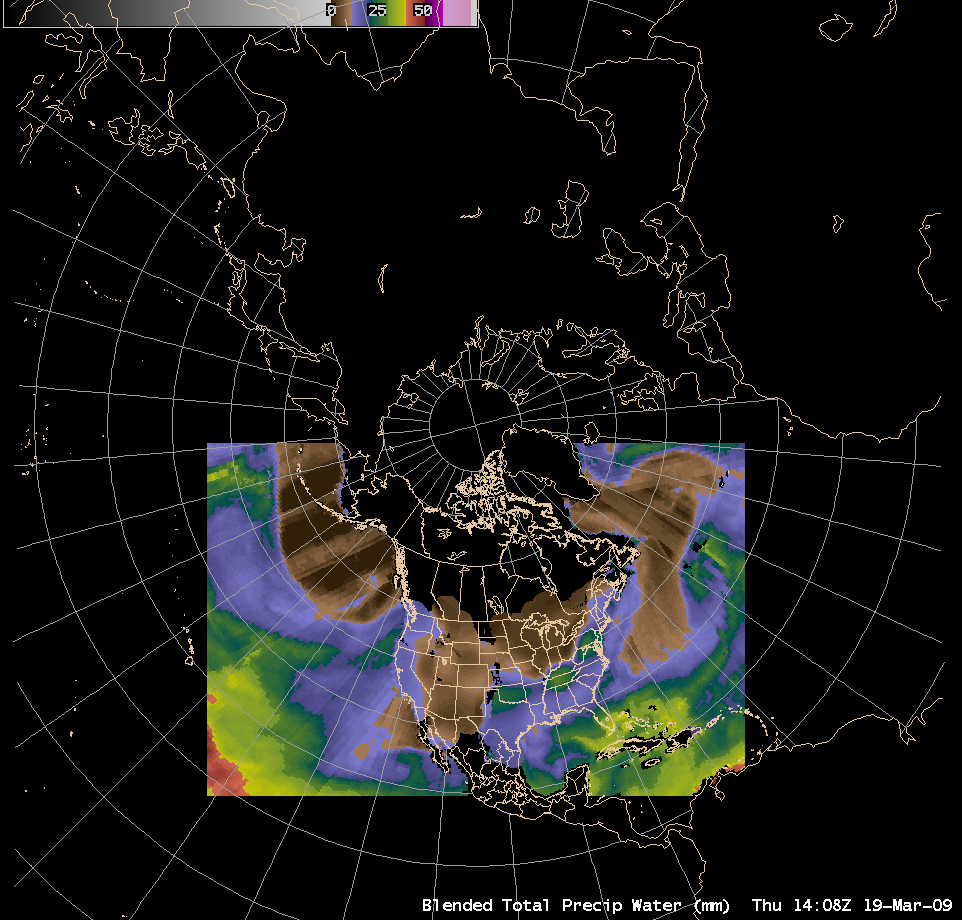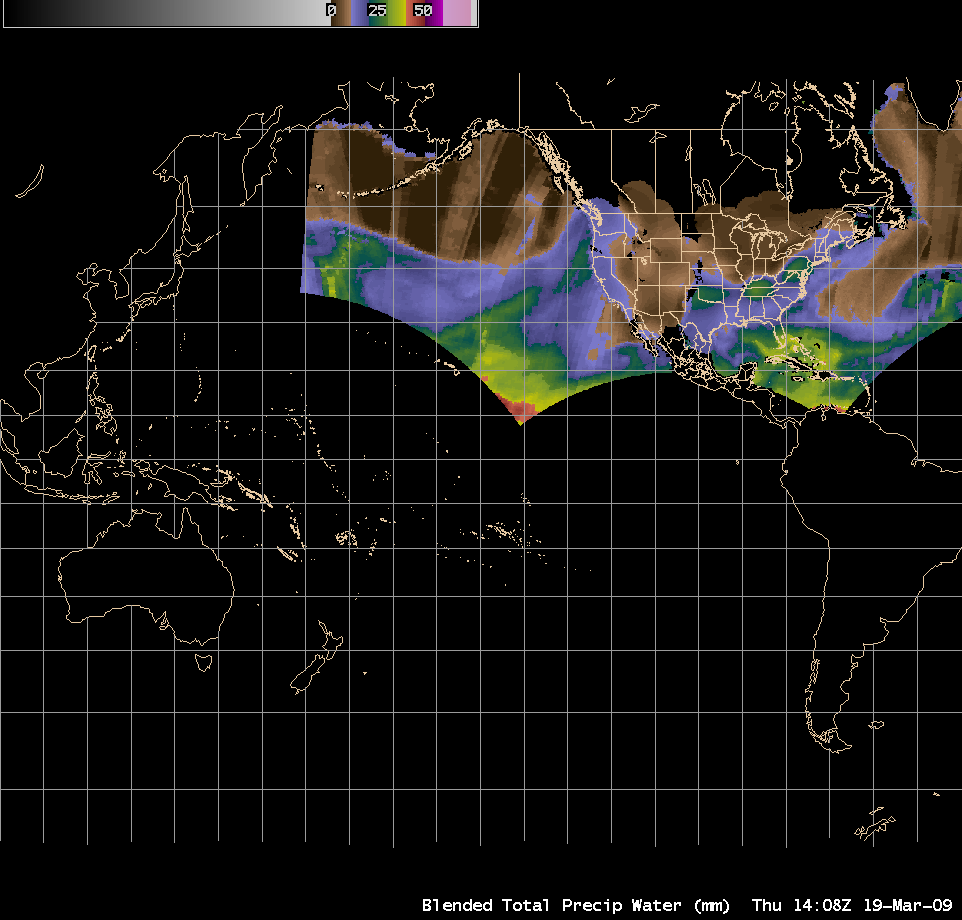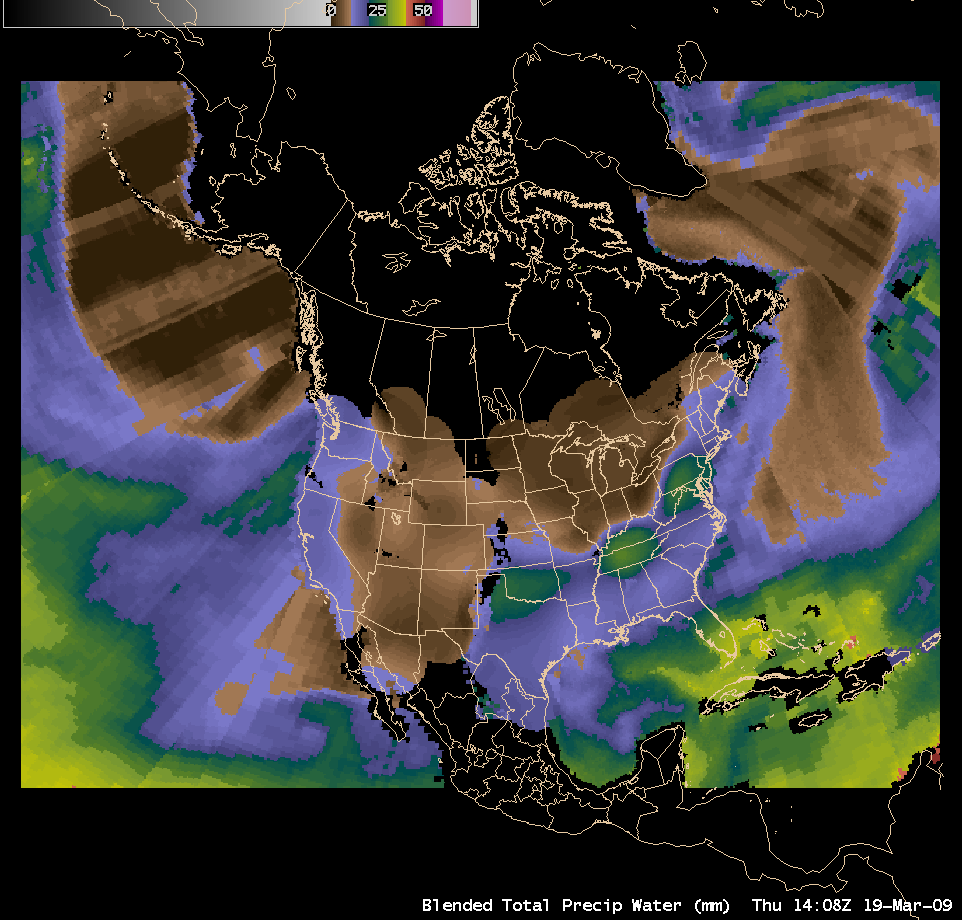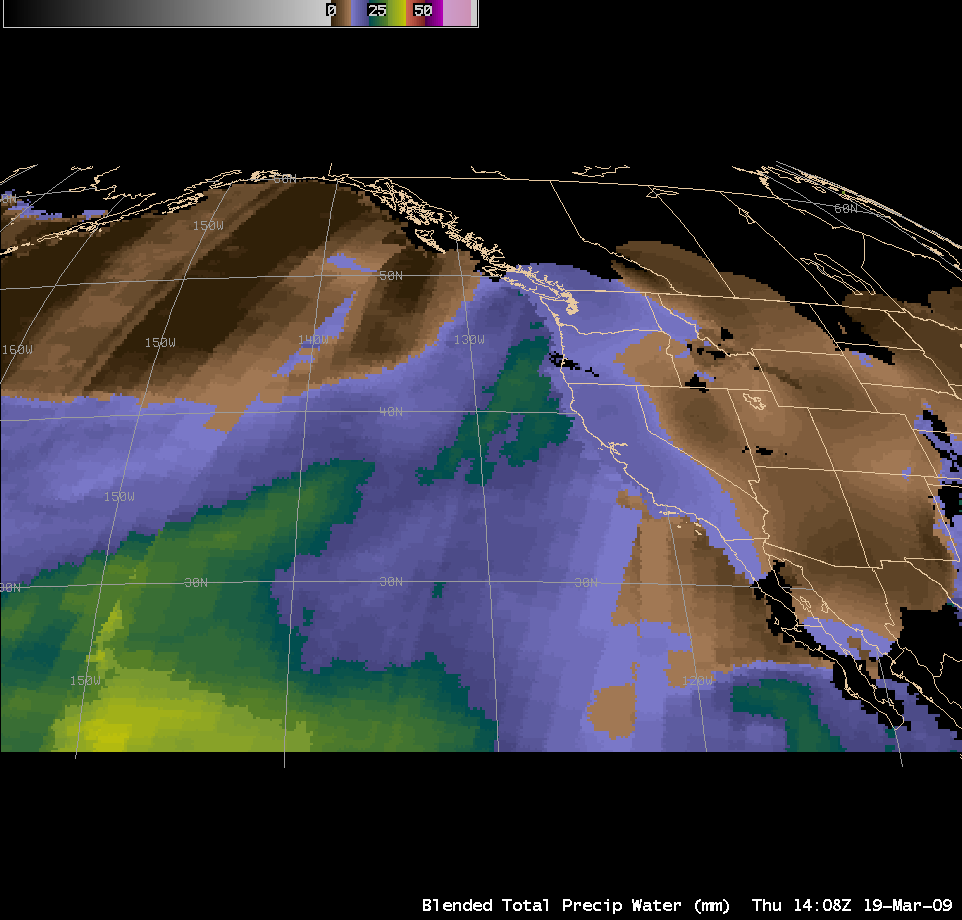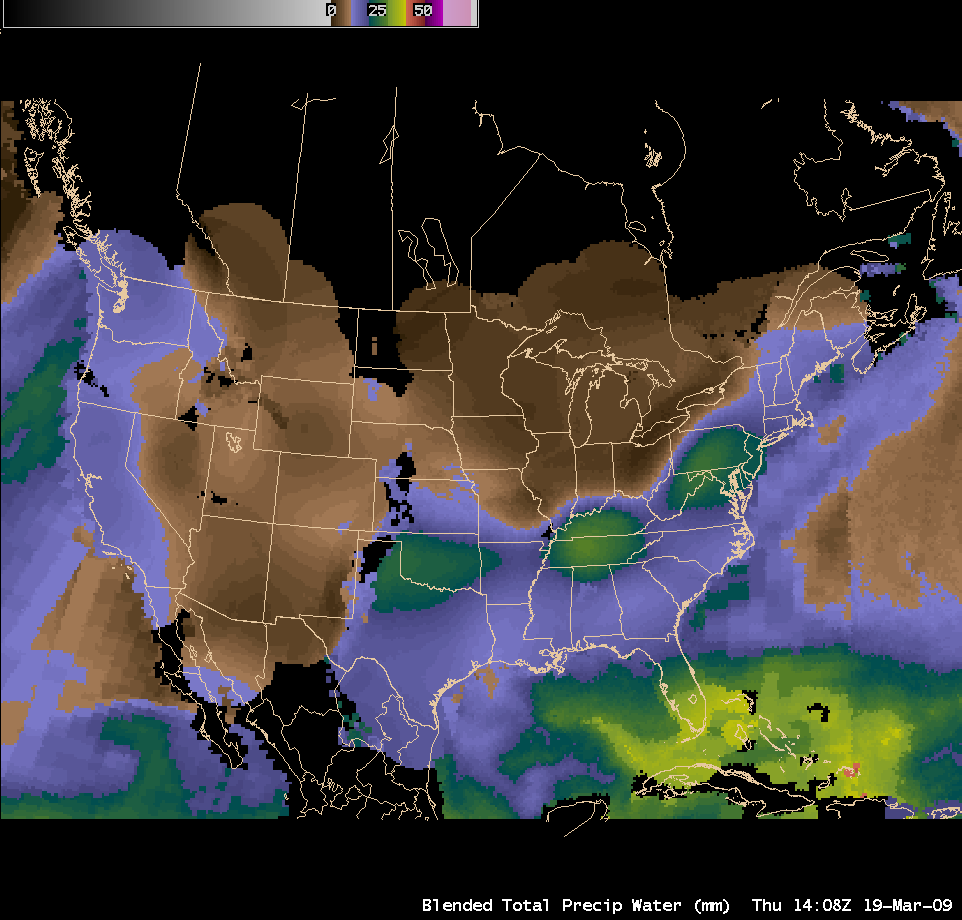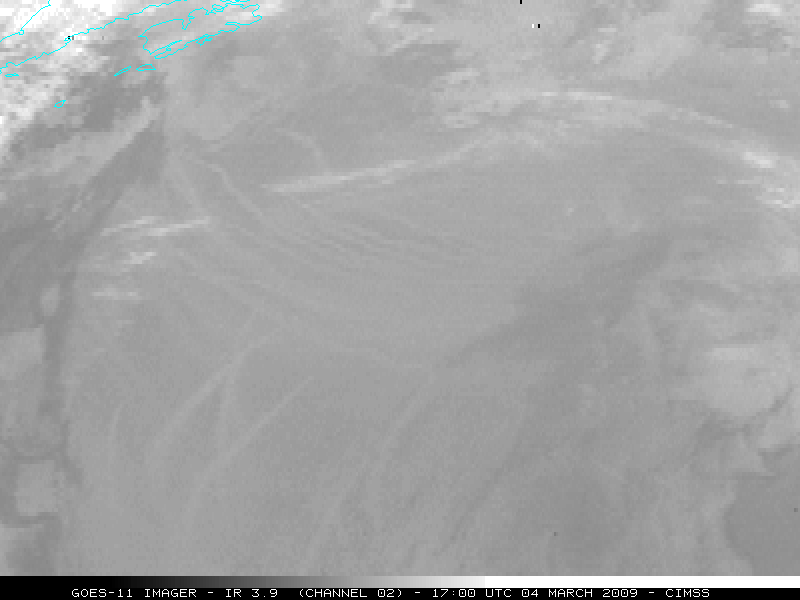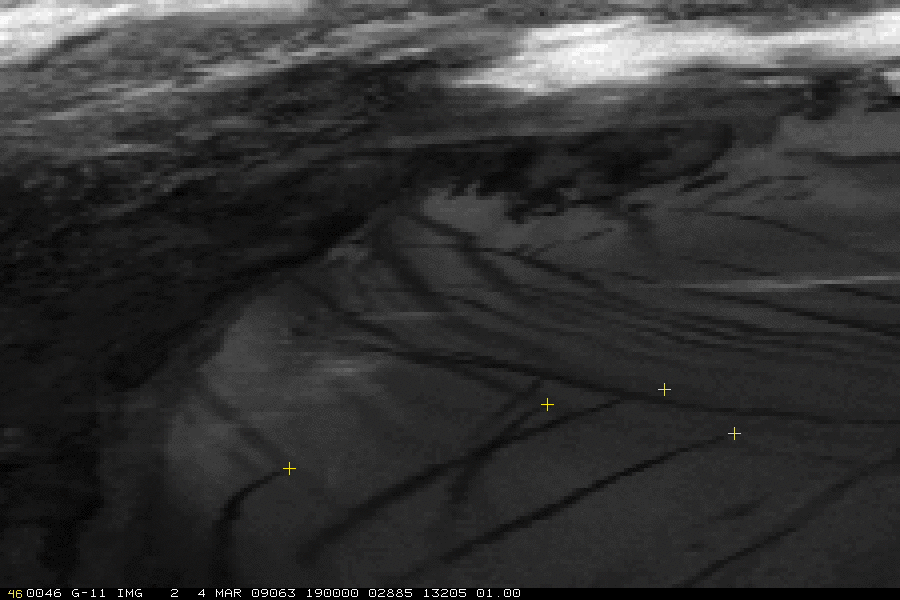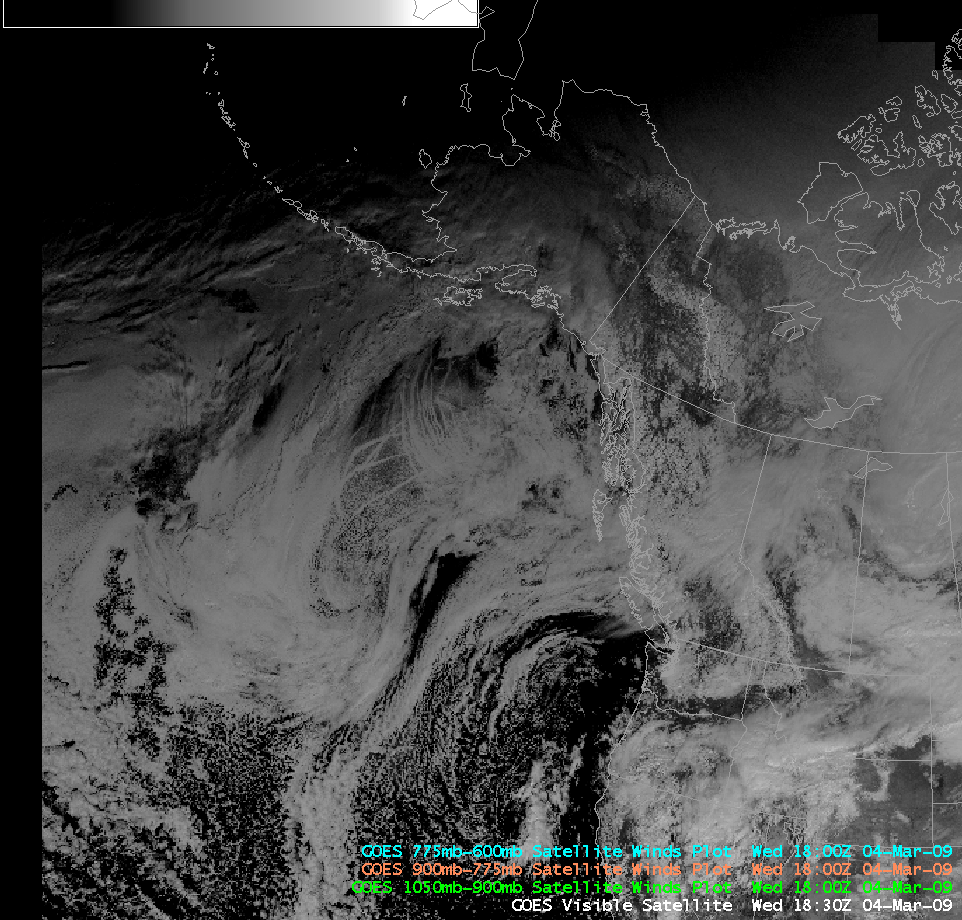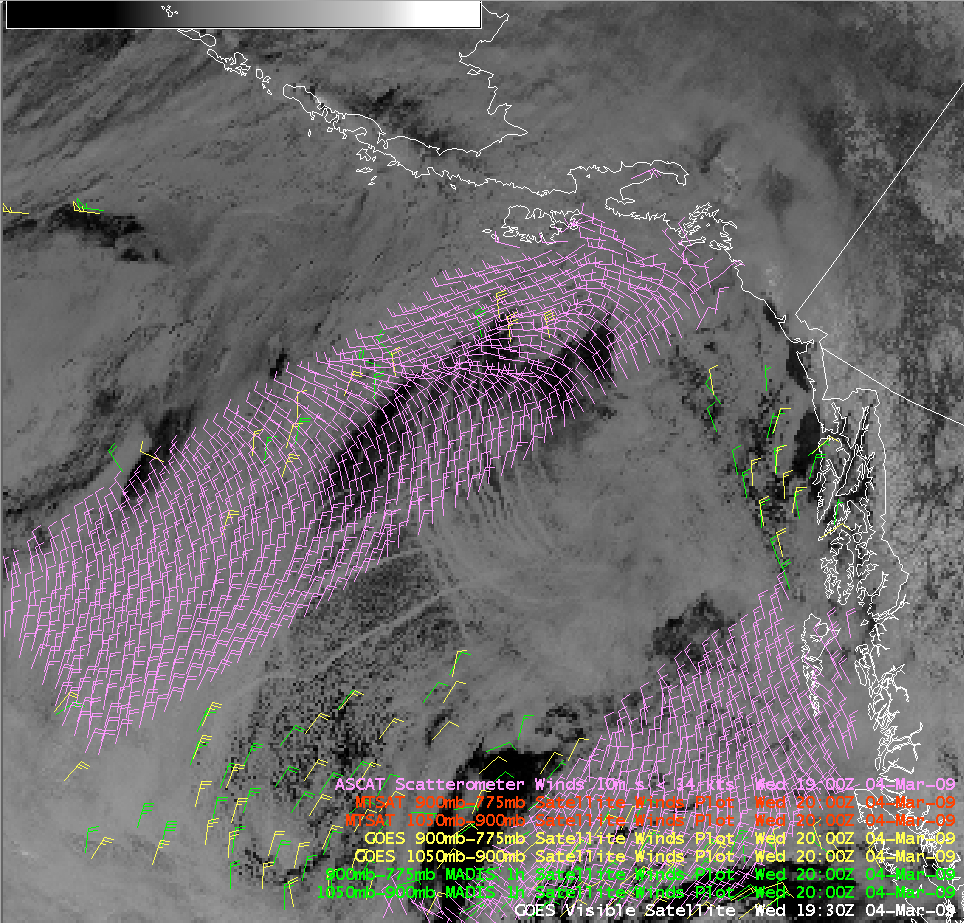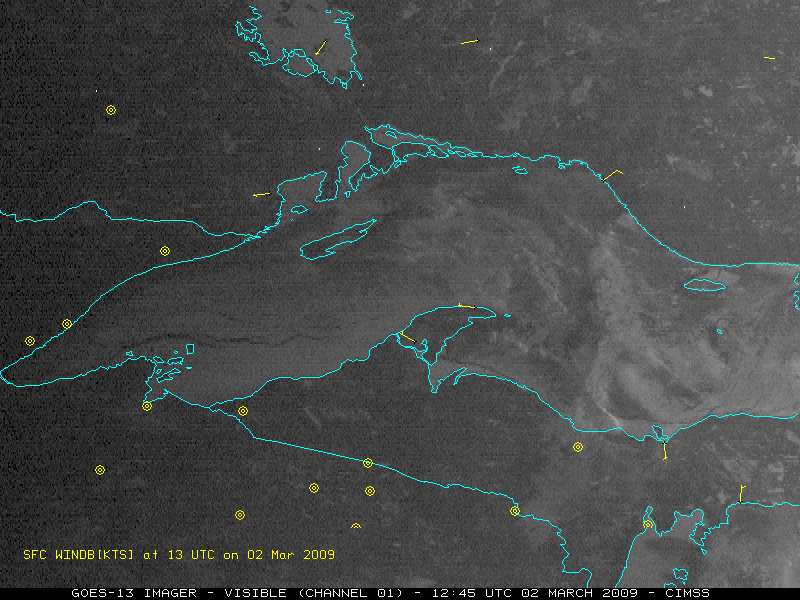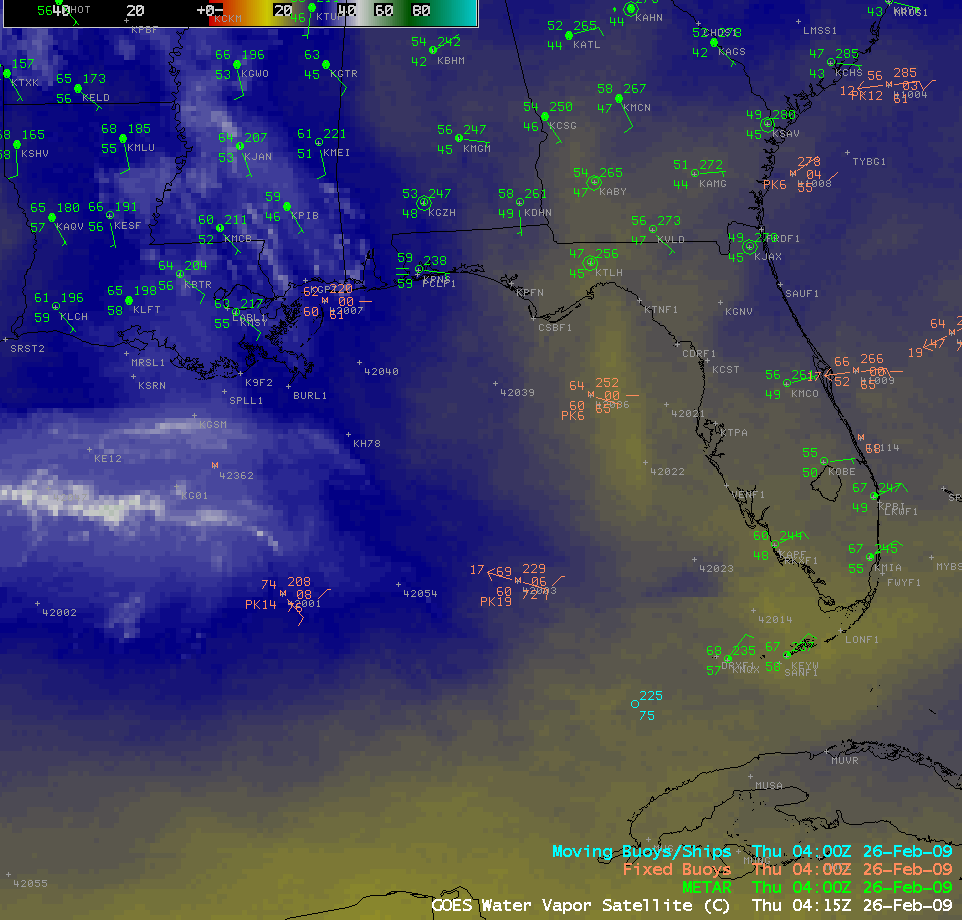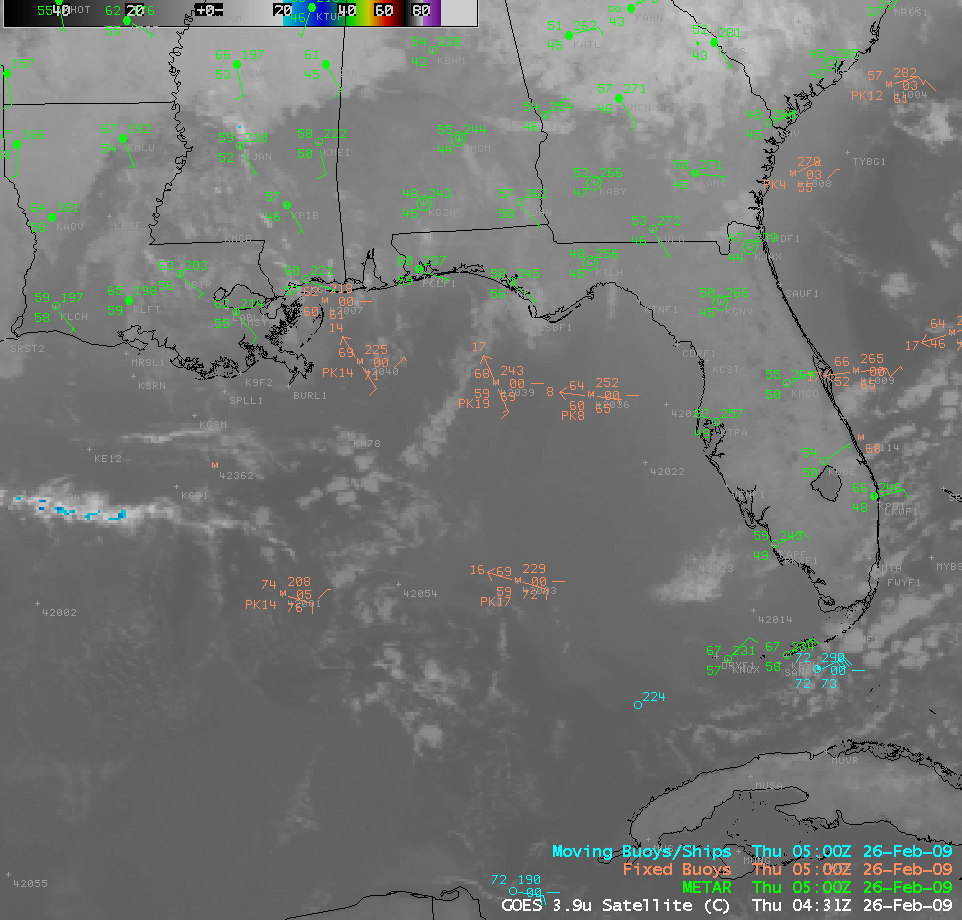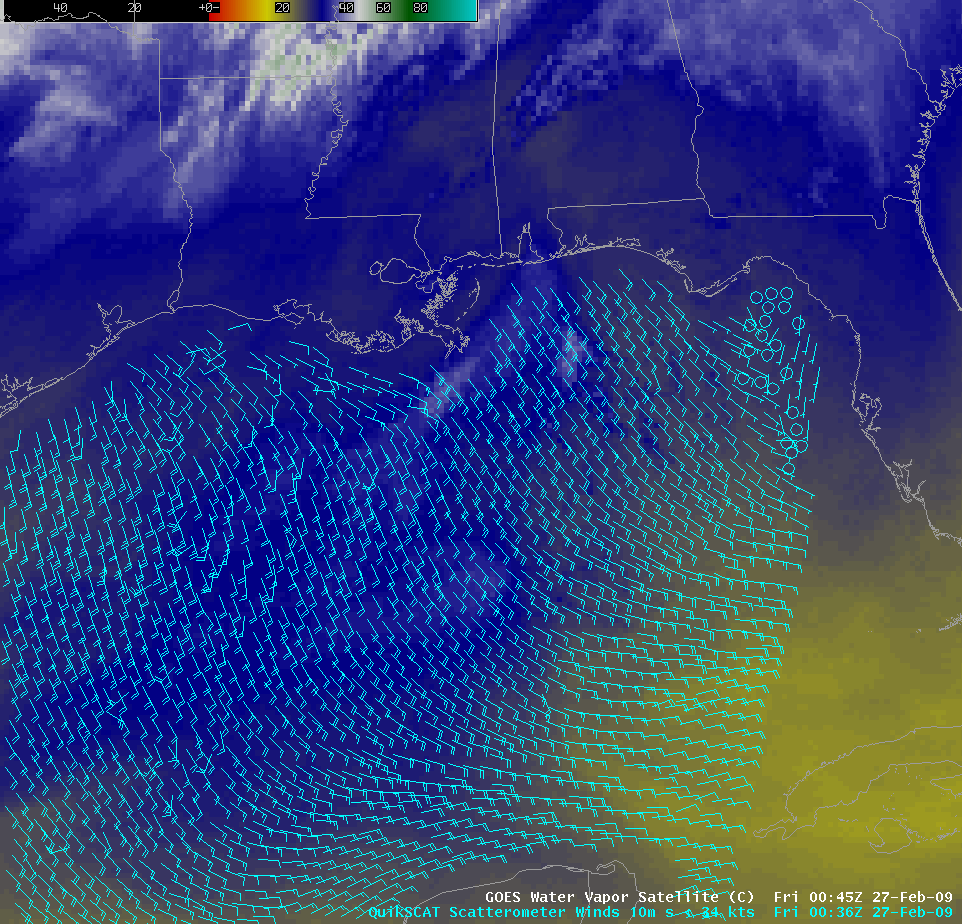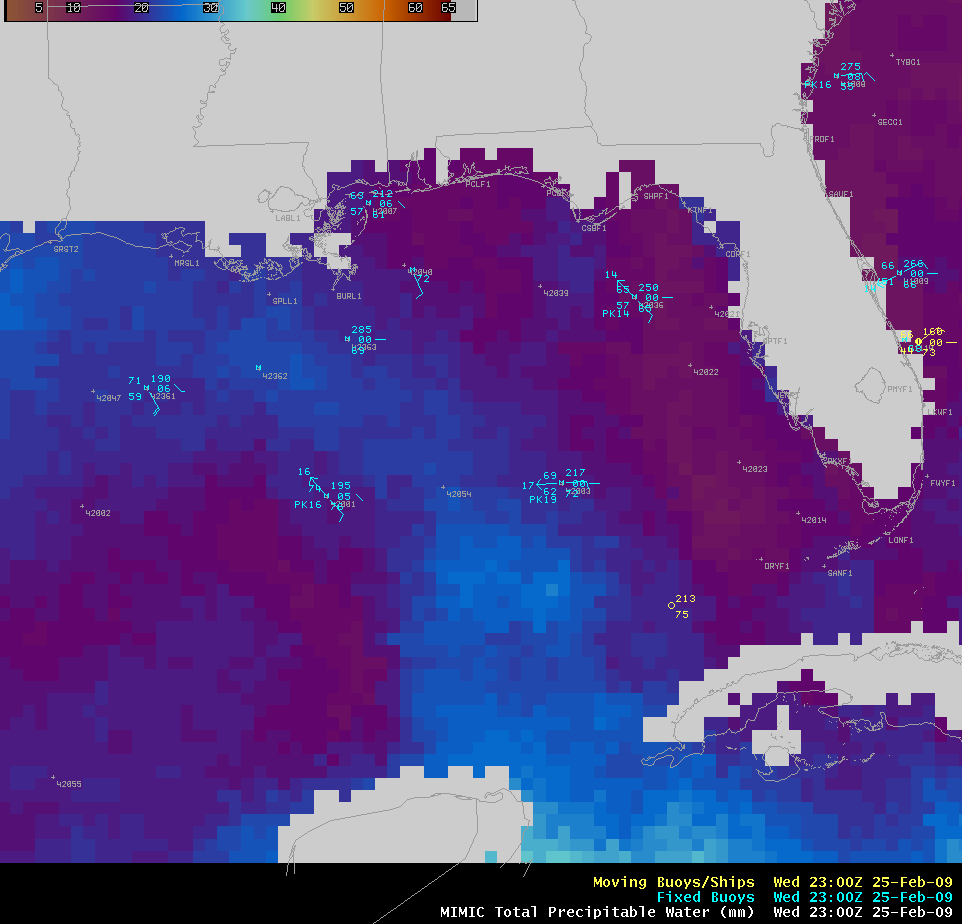Beginning on 09 March 2009, two new Blended Total Precipitable Water (TPW) products were made available to NWS forecast offices who have installed AWIPS Operational Build 9 (OB9) — a Blended TPW product (above; Animated GIF), and a Percent of Normal TPW product (below; Animated GIF).
The Blended TPW products incorporate data from a number of polar-orbiting and geostationary satellite platforms. Over water, the algorithm currently uses data from:
- the SSM/I instrument (on the DMSP F13 satellite)
- the AMSU instrument (on the NOAA-15, NOAA-16, NOAA-17, NOAA-18, and MetOp-A satellites)
and over land, the algorithm uses data from:
- the GOES Sounder instrument (on the GOES-11 and GOES-12 satellites)
- ground-based Global Positioning System (GPS-MET) receivers
On AWIPS, the Blended TPW product is generated using the latest data source available for each pixel; it is then mapped to a Mercator projection with a spatial resolution of 16 km at the Equator. The products are available in AWIPS on a varying schedule, but in general there will be 1 or 2 Blended TPW images per hour.
The Percent of Normal TPW (or “Blended TPW Anomaly”) product (below) compares the current Blended TPW values to the mean values derived during the 1988-1999 time period (using a climatology of SSM/I TPW over oceans, and a mix of rawinsonde and TOVS sounding TPW over land). Note that while the raw TPW Anomaly product is capable of calculating values in excess of 200%, on AWIPS all of the TPW Anomaly values greater than 200% are simply colored yellow (and displayed as “> 201” using AWIPS cursor sampling).
A 4-panel comparison of Blended, GOES Sounder, DMSP SSM/I, and POES AMSU TPW products (below, using a different CIMSS TPW enhancement) demonstrates some of the advantages of the blended TPW product, namely (1) no gaps between the individual swaths of polar-orbiting satellite data over water, and (2) the availability of TPW data in areas of dense cloud cover (over both land and water).
A comparison of AWIPS cursor sampling of the Blended, GOES Sounder, DMSP SSM/I, and POES AMSU TPW products (below) shows that in general, the TPW value for any given location should agree to within a few millimeters (or within several hundredths to perhaps one tenth of an inch).
However, at times there may be some disagreement between TPW values at any particular point (below), due to temporal differences of the data as displayed in AWIPS. In other words, the time displayed in the AWIPS product label may not necessarily apply to all portions of the displayed image.
The images below show the coverage of the Blended TPW product when displayed in AWIPS at the Northern Hemisphere, Pacific Mercator, North America, Pacific Satellite, and CONUS scales.
The Blended TPW and TPW Anomaly products were developed at the Cooperative Institute for Research in the Atmosphere (CIRA), and over the past few years they have been transitioned from research into NESDIS operations.
__________________________________________________________________________
References and related websites:
- Kidder, S.Q. and A.S. Jones, 2007: A blended satellite Total Precipitable Water product for operational forecasting.
- Ferraro et al., 2005: NOAA Operational Hydrological Products Derived From the Advanced Microwave Sounding Unit. IEEE Trans. Geosci. Remote Sens., 43, 1036-1049.
- Alishouse, J.C., S. Snyder, J. Vongsathorn, and R.R. Ferraro, 1990: Determination of oceanic total precipitable water from the SSM/I. IEEE Trans. Geo. Rem. Sens., Vol. 28, 811-816.
- Smith et al., 2007: Short-Range Forecast Impact from Assimilation of GPS-IPW Observations into the Rapid Update Cycle. Mon. Wea. Rev., 135, 2914-2930.
- Schmit et al., 2002: Validation and use of GOES Sounder moisture information. Wea. Forecasting, 17, 139-154.
__________________________________________________________________________
– updated 20 March 2009 –
View only this post Read Less



